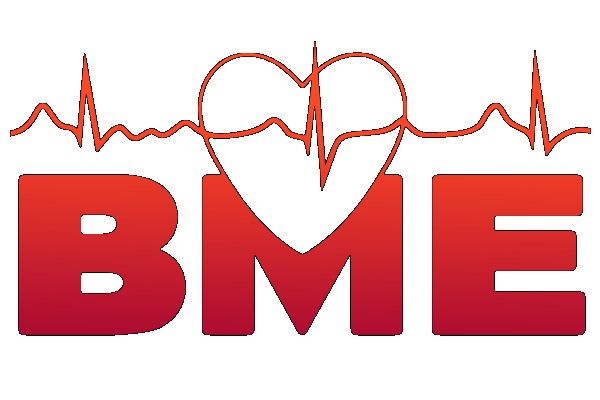Lectures:
Basic characteristics and classification of the biologic signals: computer representation, discretization, types, biological origin, diagnostic, time, frequency, and time-frequency analysis.
Convolution analysis of the biological signals: analysis of the continuous and discrete convolution.
Classification of the biological signals: neural networks, genetic algorithms, unsupervised learning, and clustering analysis.
Spectral analysis of the biologic signals: Fourier series, Fourier transformation, algorithms for the FFT, spectral density, spectral energy and power density, frequency spectra and window functions.
Noise analysis in the biological signals: types, origin, representation, methods for noise evaluation, biological signal distortion by the noise.
Filtration of the biological signals: synthesis of the analog and digital filters, FIR and IIR filters, notch filter, recursive filters, and filter frequency analysis.
The EEG signal analysis: the ECG signal representation, compressed spectral array (CSA), topographic mapping of the electrophysiological activity, interpolation of the spatial information, amplitude and frequency mapping, local coherency and phase measuring.
The ECG signal analysis: the noise analysis of the ECG signal, ECG signal representation, algorithms for the QRS complex extraction, Pan Tompkins algorithm, the R peak detection, ECG signal classification and calculation of the heart rate variability (HRV).
The PPG signal analysis: the PPG signal noise analysis, representation of the PPG signal, detection of the heart systolic phase and comparison of the heart rate from the PPG and ECG signal.
Analysis of the EMG signal: genesis, representation, features, measuring of the EMG signal, and basic methods of the EMG processing.
Breathing signals: analysis of the breathing curves and gases. Analysis of lung capacity and volume.
Electrical signals of eye: representation, detection, features, and processing of the EOG and ERG signals.
EGG analysis: analysis of the stomach electrical activity, analysis in the time and frequency domain, frequency components of the EGG signal, and spectrogram.
Analysis of the acoustic biologic signals.
Computer Excercises:
Basics of signal processing in the MATLAB.
Convolution analysis of the biological signals.
Classification of the biological signals.
Spectral analysis of the biological signals.
Noise analysis in the biological signals.
Biological signals filtration.
Analysis of the EEG signal.
Analysis of the ECG signal.
Analysis of the PPG signal.
Analysis of the EMG signal.
Analysis of the breathing signals.
Analysis of the eye electrical signals.
Analysis of the EGG signal.
Analysis of the acoustic biological signals.
Basic characteristics and classification of the biologic signals: computer representation, discretization, types, biological origin, diagnostic, time, frequency, and time-frequency analysis.
Convolution analysis of the biological signals: analysis of the continuous and discrete convolution.
Classification of the biological signals: neural networks, genetic algorithms, unsupervised learning, and clustering analysis.
Spectral analysis of the biologic signals: Fourier series, Fourier transformation, algorithms for the FFT, spectral density, spectral energy and power density, frequency spectra and window functions.
Noise analysis in the biological signals: types, origin, representation, methods for noise evaluation, biological signal distortion by the noise.
Filtration of the biological signals: synthesis of the analog and digital filters, FIR and IIR filters, notch filter, recursive filters, and filter frequency analysis.
The EEG signal analysis: the ECG signal representation, compressed spectral array (CSA), topographic mapping of the electrophysiological activity, interpolation of the spatial information, amplitude and frequency mapping, local coherency and phase measuring.
The ECG signal analysis: the noise analysis of the ECG signal, ECG signal representation, algorithms for the QRS complex extraction, Pan Tompkins algorithm, the R peak detection, ECG signal classification and calculation of the heart rate variability (HRV).
The PPG signal analysis: the PPG signal noise analysis, representation of the PPG signal, detection of the heart systolic phase and comparison of the heart rate from the PPG and ECG signal.
Analysis of the EMG signal: genesis, representation, features, measuring of the EMG signal, and basic methods of the EMG processing.
Breathing signals: analysis of the breathing curves and gases. Analysis of lung capacity and volume.
Electrical signals of eye: representation, detection, features, and processing of the EOG and ERG signals.
EGG analysis: analysis of the stomach electrical activity, analysis in the time and frequency domain, frequency components of the EGG signal, and spectrogram.
Analysis of the acoustic biologic signals.
Computer Excercises:
Basics of signal processing in the MATLAB.
Convolution analysis of the biological signals.
Classification of the biological signals.
Spectral analysis of the biological signals.
Noise analysis in the biological signals.
Biological signals filtration.
Analysis of the EEG signal.
Analysis of the ECG signal.
Analysis of the PPG signal.
Analysis of the EMG signal.
Analysis of the breathing signals.
Analysis of the eye electrical signals.
Analysis of the EGG signal.
Analysis of the acoustic biological signals.
